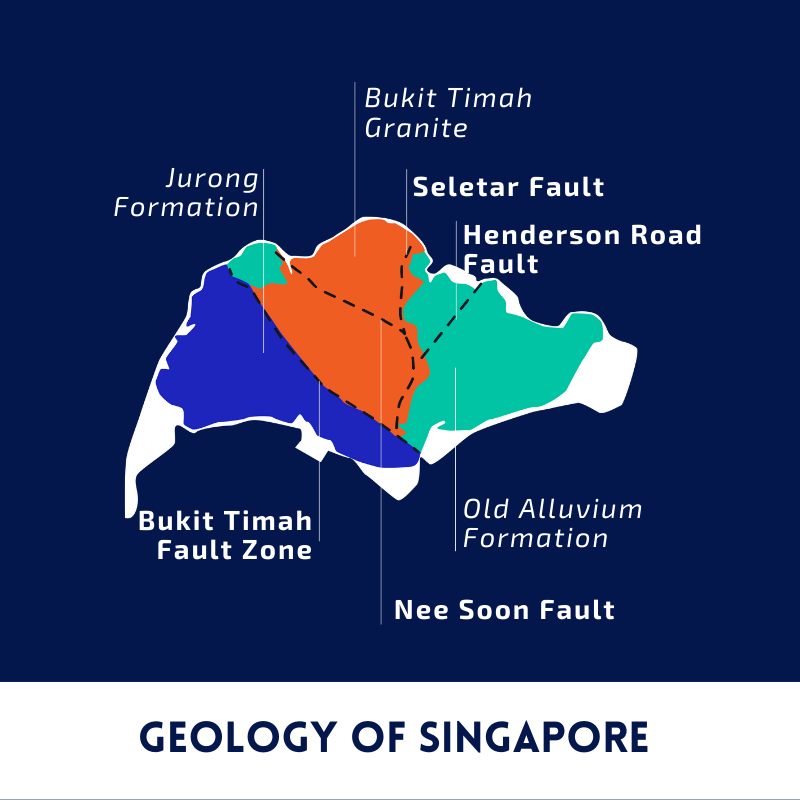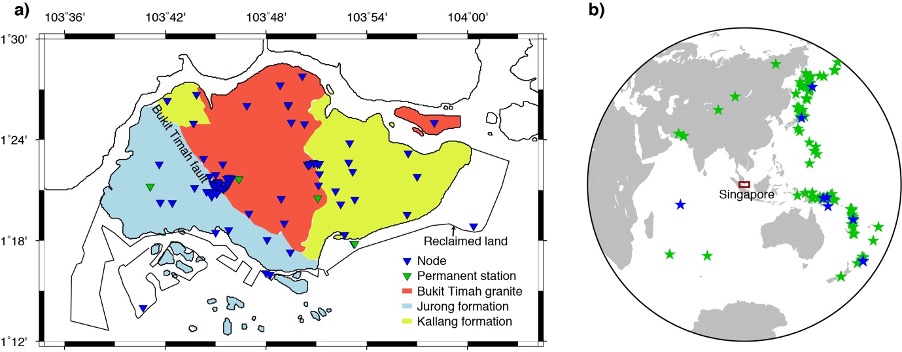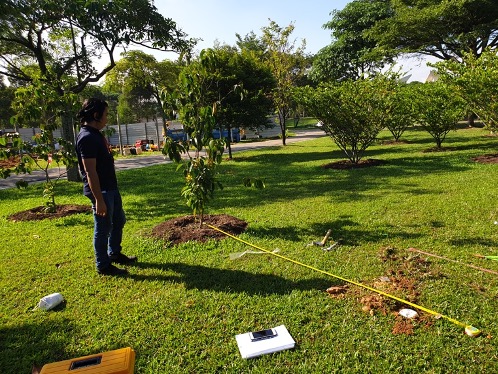The first results from Singapore’s first island-wide seismic survey unravel some important features of Singapore’s underground.

In March of last year, a team at the Earth Observatory of Singapore (EOS) recorded the ground movements of Singapore using 88 seismometers placed in locations such as schools, parks and weather stations.
We collected a vast quantity of fascinating data using distant earthquakes to image Singapore’s subsurface, and our first set of results were recently published in the journal Geophysical Research Letters.

Seismologists use a technique called receiver functions to look at boundaries between different rocks beneath our feet. The first seismic wave which arrives from a distant earthquake (the P wave) converts to another type of seismic wave (an S wave) at boundaries between rock types. This is known as a mode conversion.
In order to find where these boundaries are, we first have to find when the mode conversions occur. Fortunately, this is straightforward since the P waves produce vertical ground movement at the seismometers (so are recorded on the vertical component of the seismometer), while the S waves produce horizontal ground movement (and are recorded on the horizontal component).
If we remove the common part of these components, the only signal which remains is the receiver function, which gives us the time when the mode conversions arrive. We can then project these mode conversions from time into distance using a velocity model in order to find the depth of the boundaries.

The boundary beneath Singapore with the greatest contrast across it, where the crust meets the mantle, is also known as the Moho. Our survey found that in Singapore, the Moho occurs 32 kilometres beneath the surface (about average for crust below continental land), and it doesn’t change depth across the island.
In more exciting news, we also found other boundaries within the crust which do change across Singapore. In fact, we see that the structure of the crust in the west of Singapore is different from the structure of the crust in the east. For example, the crust below the Jurong Formation in western Singapore contains more rock layers, and since the boundary between the western and eastern sides occurs near the surface expression of the Bukit Timah fault zone, the fault may run deep below the surface.
Our study is proof that well-established seismological techniques can be applied in cities where other types of surveys are not possible and where the seismic data is contaminated with everyday noise.

What is also exciting is that we only needed one month of data to image the subsurface, whereas normally scientists have to wait for several years to gather enough data. We can do that because we have many stations close together. We can afford to do that because we are using new seismic instruments that are much cheaper than traditional ones. While we have shown what is possible with only one month of noisy urban data, we would still like to gather more data in the future to increase the detail and accuracy of our observations.
The data that was recorded in March last year is proving to be a rich source of information. As well as detecting large, distant earthquakes, we have also identified local sources of seismic waves such as blasting from construction sites and even thunder and lightning storms.
Our next target is to image the shallower surface in more detail, with results that could impact Singapore’s underground development, so watch this space.